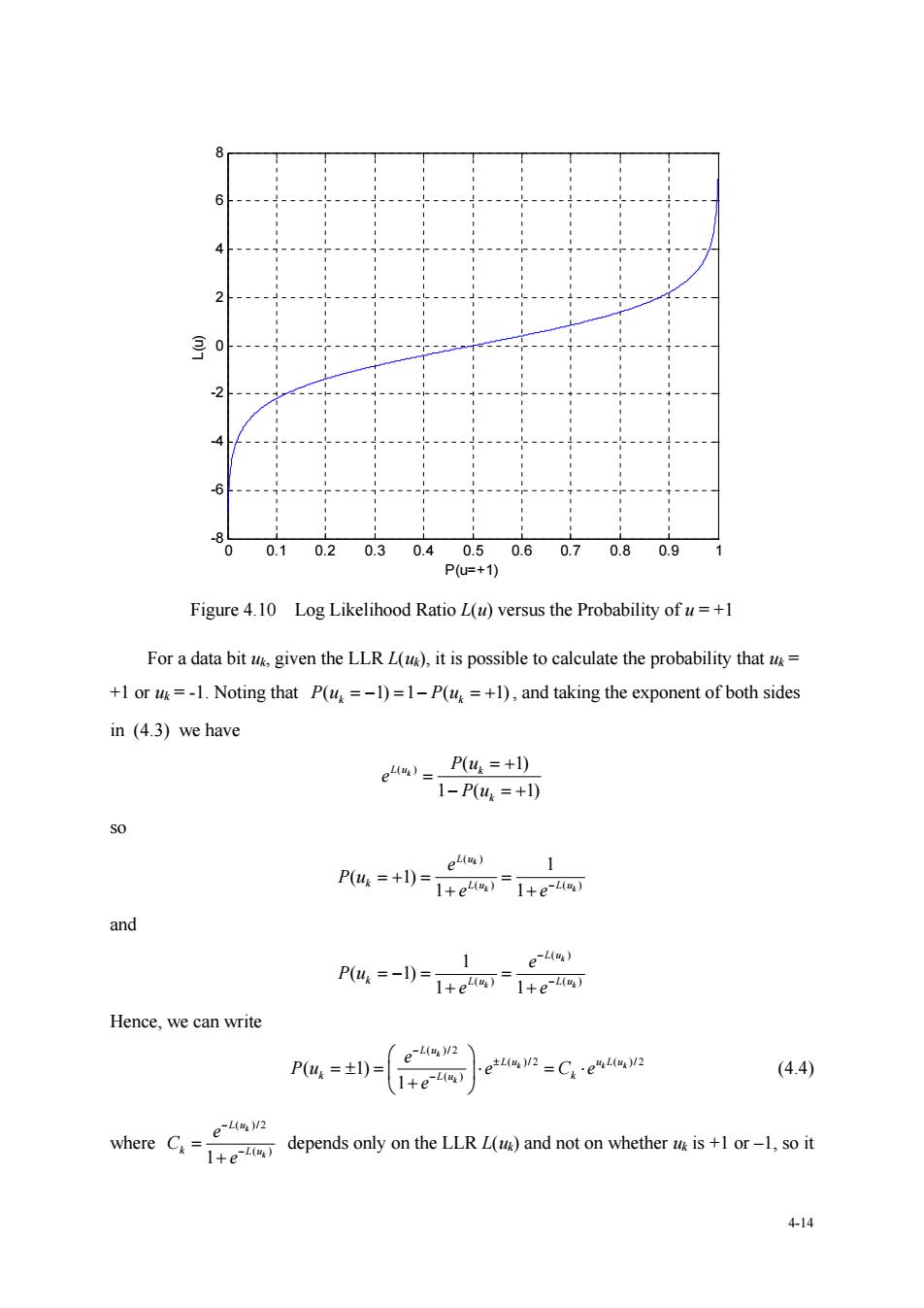正在加载图片...

0 0.1 0.2 0.3 0.4 P1 0.6 0.7 0.80.9 Figure 4.10 Log Likelihood Ratio L(u)versus the Probability of u=+1 For a data bit given the LLR L(),it is possible to calculate the probability that +1 or =-1.Noting that P(u=-1)=1-P(u=+1),and taking the exponent of both sides in (4.3)we have e4)=P4=+) 1-P(44=+l) P4:=+l)=+e4网-1+e网 and e-lm) P4,=-l)=1+e1+e Hence,we can write (e42) (4.4 e42 where Cdepends only on the LLR)and not on whetherisrt 4144-14 0 0.1 0.2 0.3 0.4 0.5 0.6 0.7 0.8 0.9 1 -8 -6 -4 -2 0 2 4 6 8 P(u=+1) L(u) Figure 4.10 Log Likelihood Ratio L(u) versus the Probability of u = +1 For a data bit uk, given the LLR L(uk), it is possible to calculate the probability that uk = +1 or uk = -1. Noting that ( 1) 1 ( 1) Pu Pu k k , and taking the exponent of both sides in (4.3) we have ( ) ( 1) 1 ( 1) L uk k k P u e P u so ( ) () () 1 ( 1) 1 1 k k k L u k Lu Lu e P u e e and ( ) () () 1 ( 1) 1 1 k k k L u k Lu Lu e P u e e Hence, we can write ( )/2 ( )/2 ( )/2 ( ) ( 1) 1 k k kk k L u Lu uLu k k L u e Pu e C e e (4.4) where ( )/2 ( ) 1 k k L u k L u e C e depends only on the LLR L(uk) and not on whether uk is +1 or –1, so it